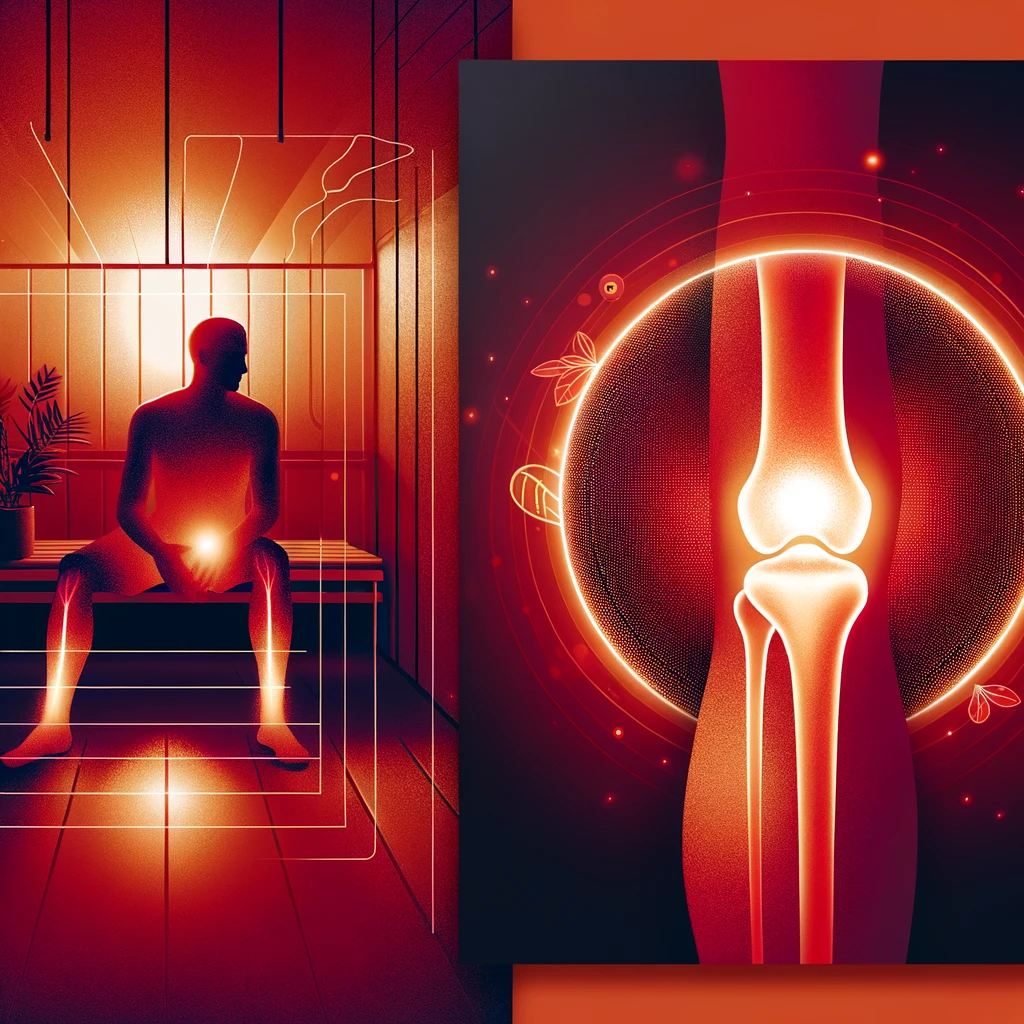
Table of Contents
Dealing with joint pain can feel like a never-ending battle. Whether it’s arthritis, old injuries, or just wear and tear from daily life, joint pain can significantly impact your quality of life. If you’ve been exploring various remedies, you might have come across infrared therapy. But what exactly is it, and how can it help with joint pain? This article dives deep into the benefits of infrared therapy for joint pain relief and why it might be worth considering.
Understanding Infrared Therapy
What is Infrared Therapy?
Infrared therapy involves the use of infrared light to penetrate the skin and provide therapeutic benefits. Unlike ultraviolet light, which can damage the skin, infrared light is safe and can penetrate deep into the tissues.
How Does Infrared Therapy Work?
Infrared light, particularly in the far-infrared spectrum, generates heat that can reach muscles, nerves, and bones. This heat improves circulation, reduces inflammation, and promotes healing at a cellular level. Essentially, it’s like giving your cells a rejuvenating boost of energy.
The Science Behind Infrared Therapy
Infrared Wavelengths
Infrared light is categorized into near, mid, and far wavelengths. Far-infrared (FIR) wavelengths are most commonly used for therapy because they can penetrate deeper into the body, reaching affected joints and muscles.
Heat Penetration and Blood Flow
The heat from infrared therapy promotes increased blood flow. This is crucial because better blood circulation means more oxygen and nutrients are delivered to the damaged tissues, facilitating faster recovery and pain relief.
Cellular Repair and Regeneration
Infrared therapy stimulates cellular repair and regeneration. The light energy penetrates cells and supports the production of ATP (adenosine triphosphate), which is essential for cellular processes and healing.
Infrared Therapy for Joint Pain
Mechanism of Pain Relief
Infrared therapy reduces pain by blocking pain signals, reducing inflammation and improving blood circulation. This triad effect provides significant relief from chronic joint pain.
Inflammation Reduction
By reducing inflammation, infrared therapy helps to alleviate pain and stiffness in the joints. This is particularly beneficial for conditions like arthritis where inflammation is a primary source of pain.
Increased Range of Motion
Regular use of infrared therapy can enhance the flexibility and range of motion of the joints by reducing stiffness and promoting tissue elasticity.
Types of Infrared Therapy Devices
Infrared Saunas
Infrared saunas use far-infrared light to heat the body directly, rather than heating the air around you. They provide a full-body treatment that can be especially beneficial for systemic pain and stiffness.
Infrared Lamps
These are more targeted devices that can be used to focus on specific areas of the body. They are ideal for localized joint pain, such as knee or shoulder pain.
Wearable Infrared Devices
Wearable devices like infrared wraps or belts allow for convenient, on-the-go therapy. They are great for chronic pain sufferers who need regular treatment.
Comparing Infrared Therapy to Other Treatments
Infrared vs. Traditional Heat Therapy
Traditional heat therapy provides superficial heat and often cools quickly. In contrast, infrared therapy delivers deeper, longer-lasting heat, making it more effective for joint pain relief.
Infrared vs. Medications
While medications can provide quick pain relief, they often come with side effects and do not address the underlying issues. Infrared therapy offers a non-invasive, drug-free alternative that targets the root causes of pain.
Infrared vs. Physical Therapy
Infrared therapy can complement physical therapy by reducing pain and stiffness, allowing for more effective rehabilitation exercises.
Who Can Benefit from Infrared Therapy?
Arthritis Patients
Infrared therapy is particularly effective for arthritis sufferers, as it helps reduce joint inflammation and pain without the need for medications.
Athletes and Active Individuals
For athletes and active individuals, infrared therapy can aid in recovery by reducing muscle soreness and enhancing blood flow to injured areas.
Older Adults
Older adults with chronic joint pain or stiffness can find significant relief with regular infrared therapy sessions.
How to Use Infrared Therapy for Joint Pain
Frequency and Duration
For optimal results, sessions can range from 15 to 30 minutes, 2-3 times a week. Always follow the manufacturer’s guidelines or consult with a healthcare provider for personalized advice.
Safety Guidelines
Ensure you stay hydrated, avoid direct eye exposure to infrared light, and do not overuse the therapy to prevent burns or overheating.
Complementary Practices
Combining infrared therapy with stretching, physical therapy or anti-inflammatory diets can enhance overall effectiveness.
Clinical Studies and Evidence
Research Supporting Infrared Therapy
Multiple studies support the effectiveness of infrared therapy for pain relief and inflammation reduction. Clinical trials have shown significant improvements in patients with arthritis and chronic pain conditions.
DIY Infrared Therapy: Home Solutions
Home Infrared Saunas
Investing in a home infrared sauna can be a convenient way to enjoy the benefits of infrared therapy regularly. These saunas are available in various sizes and configurations to fit different spaces and budgets.
Portable Infrared Devices
Portable devices like handheld lamps or wearable wraps are perfect for targeting specific areas and can be used while watching TV or working from home.
Cost and Accessibility
Price Range of Devices
Infrared therapy devices range from affordable portable options to high-end saunas, with prices varying based on features and brand.
Insurance Coverage and Alternatives
Some insurance plans may cover infrared therapy devices or sessions, especially if prescribed by a healthcare provider. Always check with your insurance company for details.
Potential Risks and Side Effects
Common Side Effects
Side effects are generally minimal but can include mild skin irritation or burns if used improperly. Always follow usage instructions carefully.
Precautions and Contraindications
Individuals with certain medical conditions or those who are pregnant should consult with a healthcare provider before starting infrared therapy.
Infrared Therapy and Lifestyle Changes
Diet and Exercise
Combining infrared therapy with a balanced diet and regular exercise can enhance pain relief and improve joint health.
Stress Management
Reducing stress through practices like meditation or yoga can complement the benefits of infrared therapy by promoting overall well-being.
Future Trends in Infrared Therapy
Technological Innovations
Advancements in infrared technology are making devices more effective, affordable, and user-friendly, expanding their accessibility.
Integration with Other Therapies
Infrared therapy is increasingly being integrated with other treatment modalities such as cryotherapy and laser therapy for enhanced pain relief.
Conclusion
Infrared therapy offers a promising, non-invasive solution for joint pain relief. Its ability to penetrate deeply, enhance blood flow, reduce inflammation, and promote cellular healing makes it an effective tool for managing chronic pain and improving joint health. Whether you’re dealing with arthritis or just looking to alleviate occasional joint discomfort, incorporating infrared therapy into your wellness routine could be a game-changer.
FAQs
Is infrared therapy safe for everyone?
Infrared therapy is generally safe for most people. However, those with certain medical conditions or who are pregnant should consult their healthcare provider before starting treatment.
How long does it take to see results from infrared therapy?
Many users report feeling relief after just a few sessions, but consistent use over several weeks is often necessary for significant improvements.
Can infrared therapy replace medication for joint pain?
Infrared therapy can be a great complementary treatment but should not be used as a replacement for prescribed medications without consulting a healthcare provider.
Are there any side effects of infrared therapy?
Side effects are rare but can include mild skin irritation or burns if not used properly. Always follow the instructions for your specific device.
How do I choose the right infrared therapy device?
Consider factors like the area of pain, device type, budget, and user reviews when choosing an infrared therapy device. Consulting with a healthcare provider can also help in making an informed decision.



